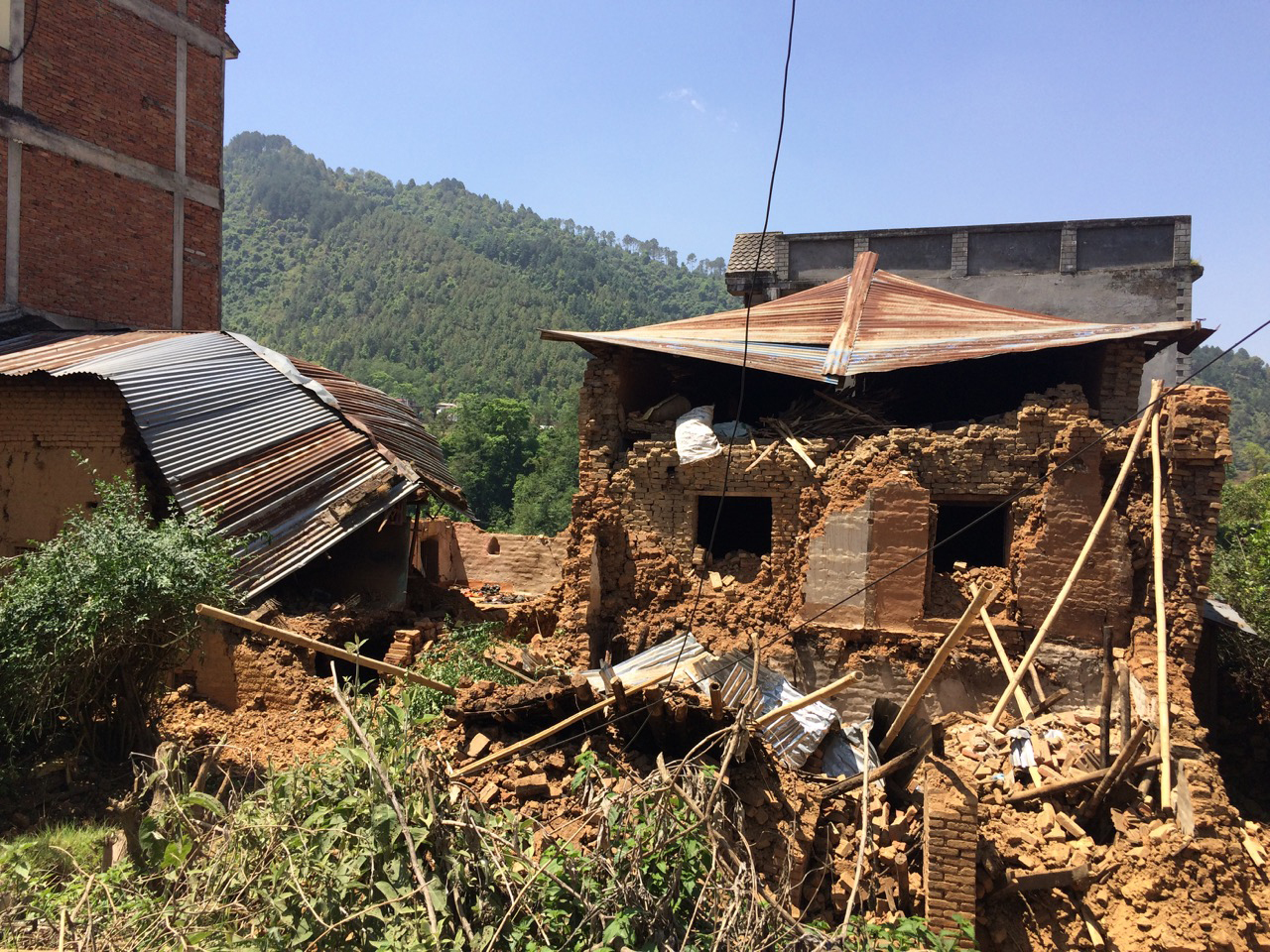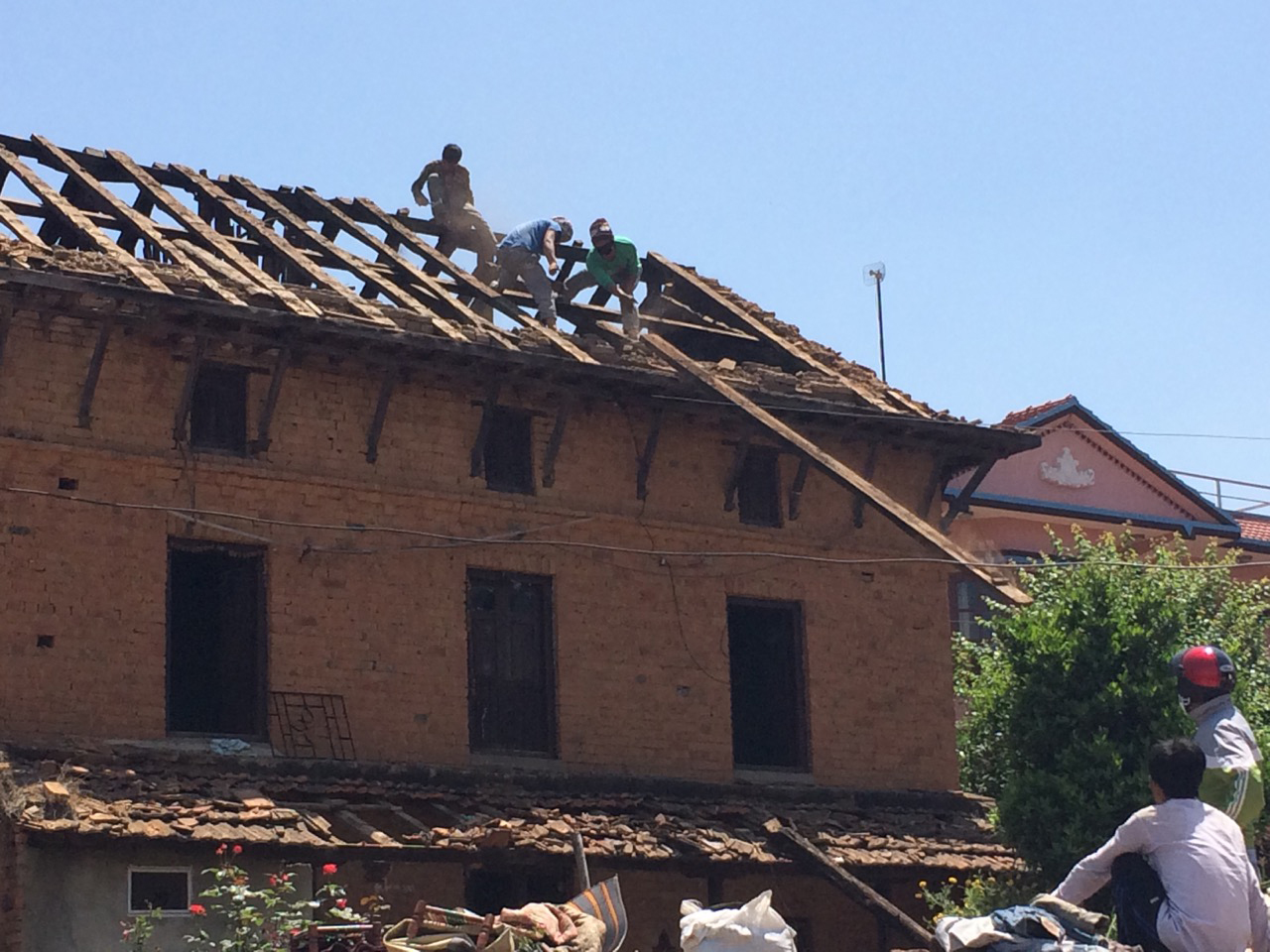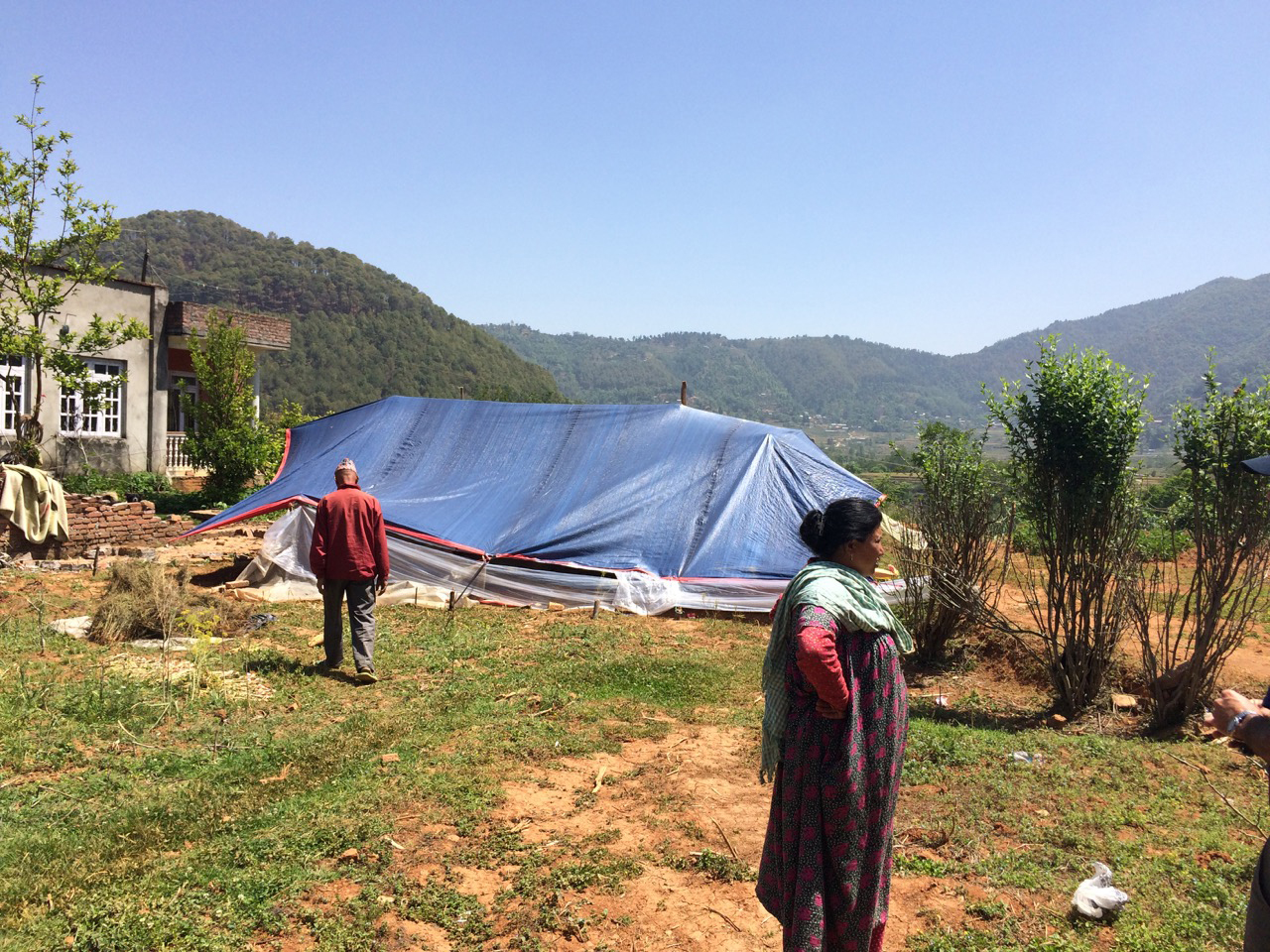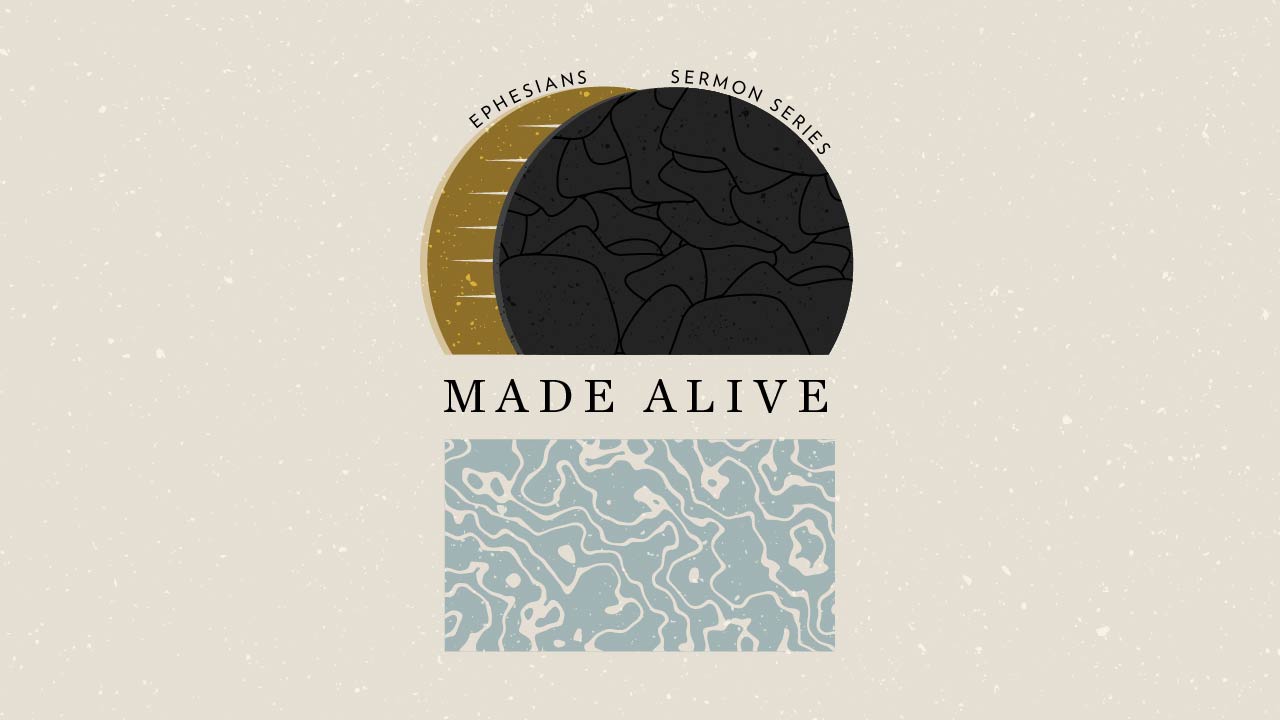Day One in Nepal
- Relief: Matt Hamilton and IDNR
- Day 1 in Nepal
- Day 2 in Nepal – Bhaktapur
- Days 3-9 in Upper Rasuwa Nepal
- Day 10 – Another Quake
- The Work Continues – Meet Hari
It’s good to be back—lots of fond memories evoked by Nepal’s unique sights and smells!
Morning:
Spent the AM walking through several homes in the three villages. Bill Ashwell, friend and disaster response co-laborer, has effectively provided food and shelter. The tents below are temporary housing for 50-70 people. While most homes remain standing, many suffer such structural damage that they must be torn down and rebuilt.
 Above: Temporary housing—for a small village!
Above: Temporary housing—for a small village!
 Above: While the outside of this home looks fair enough, the inside is littered with significant cracks, making the home a hazard to live in. Demolition begins…
Above: While the outside of this home looks fair enough, the inside is littered with significant cracks, making the home a hazard to live in. Demolition begins…
Demolition and rebuilding is of course a difficult, dangerous and costly task, and is cause for concern that another wave of death is in the near future. Several homes in these villages suffered partial or complete collapse. The villages together suffered only one death (miraculously). The collapsed home below was the site of that death. The man was a former employee of Bill’s.
 Above: Reduced to rubble.
Above: Reduced to rubble.
Afternoon:
Bill and I were both trained by and are members of the International Disaster Response Network—-a training that centers largely on the ‘how to’ of establishing local coordination centers (LCCs; or centers of operation for disaster management). We spent the PM with our trainer and friend, David Bopp. We were first at the Operation Mobilization (OM) training center, where David made sure their LCC was up to par. We were later at the Nepali Christian Center for Disaster Relief in search of neglected villages outside the KTM valley. We identified four that OM and YWAM will be targeting this week. These villages are still waiting on food and shelter.
Prayer:
- Medical staff is no longer needed in the KTM valley; and few are needed for those outside the valley. Due to the time of day this quake occurred, there were relatively few casualties. Most were outside at the time (roughly noon on Saturday). The current need is for structural and civil engineers to evaluate homes and other structures for livability, and advise demolition and rebuilding where necessary.
- As immediate a need as the first, is the ability to instruct the Nepali people in the proper way to tear down their homes, and then rebuild them in an earthquake-resistant manner. If we don’t provide this information, (a) several Nepalis could die during the demolition process, and (b) homes will be rebuilt as they were before. This is unacceptable given the probability of large earthquakes in Nepal’s near future. Some scientists have expressed their concern of this due to the low amount of pressure released by the 7.9 quake. The amount of pressure needed to be released could be achieved via several 7 scale quakes or one significantly larger quake. Either scenario paints a picture of further and greater destruction.
- Entire villages outside the KTM valley have been decimated. Others are struggling to survive and growing desperate. Pray that relief will come soon, and that it will come in the name of Jesus.
- The vast majority of the people who died in this quake were lost—many of them having never heard the gospel. Pray for those lost who did survive. Pray that Christians would take hold of the opportunity to minister to them, and that these lost Hindus, Buddhists, and Muslims would come to Christ! Pray also for Christians around the world—that these deaths would serve as a clarion call to the Great Commission (“Go, therefore, and make disciples of every ethnic group…’)!
by Matt Hamilton
Member of the International Disaster Response Network. Click here to stay up to date on what’s happening in Nepal.



Comments are closed.